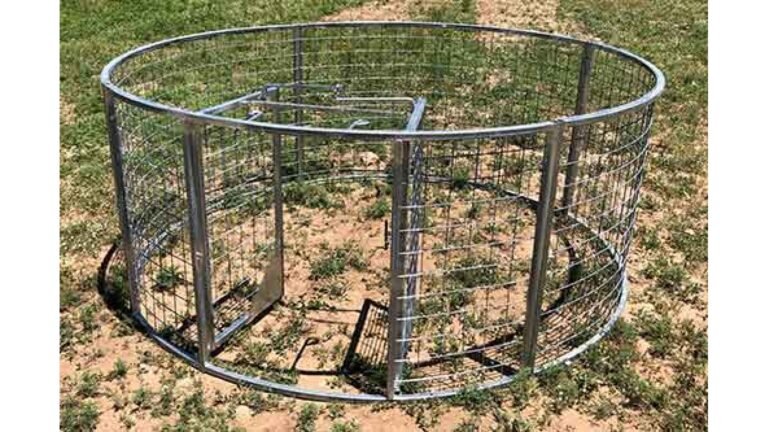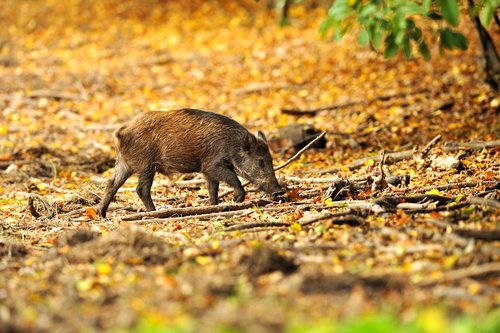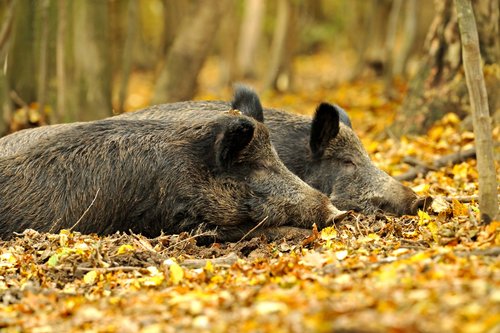Hog Hunting in Mississippi – Strategies You Should Know Now
Picture the vast landscapes of Mississippi, where dense forests, rolling hills, and sprawling farmlands provide the perfect backdrop for an adrenaline-pumping adventure. As the sun rises over the horizon, hunters flock to these lands in pursuit of an exhilarating experience: Mississippi hog hunting.`
For many outdoor enthusiasts in Mississippi, hog hunting is not just a hobby; it’s a way of life. Hog hunting has gained immense popularity over the years as more and more people discover the thrill and challenge it offers.
Whether you’re a seasoned hunter or a newcomer looking to venture into this exciting world, Mississippi provides endless opportunities to partake in this thrilling sport. From rustic farms to vast public lands, there are countless locations where you can test your skills and embark on unforgettable hog-hunting expeditions.
Brief history of feral hog population in the state
To truly understand why hog hunting has become such a prevalent activity in Mississippi, one must delve into its intriguing history with feral hogs. The presence of feral hogs can be traced back centuries ago when Spanish explorers first introduced domesticated pigs to North America. Over time, some of these pigs escaped captivity or were intentionally released into the wild.
In the fertile grounds and favorable climate of Mississippi, these animals thrived and multiplied rapidly. As their numbers grew unchecked, feral hogs wreaked havoc on agricultural crops and native ecosystems throughout the state.
Their destructive nature became evident as they rooted up farmland, consumed valuable crops, damaged vegetation, and disrupted natural habitats – posing significant threats to both farmers’ livelihoods and biodiversity. As a result, landowners and wildlife authorities realized that controlling this invasive species was crucial for preserving local ecosystems’ delicate balance.
Thus began efforts to manage feral hog populations, leading to the emergence of hog hunting as an effective method to control their numbers and mitigate their destructive impact. Stay tuned for the next section where we will explore the fascinating characteristics and behavior of feral hogs in Mississippi, shedding light on why they have become a formidable opponent for hunters and landowners alike.
Understanding Feral Hogs
A Closer Look at Mississippi’s Wild Pigs
When it comes to feral hogs in Mississippi, these creatures possess a fascinating mix of characteristics and behavior. These hogs, also known as wild pigs or wild boars, are descendants of domesticated pigs that have gone rogue over the years.
They thrive in various habitats across the state, including forests, swamps, and agricultural areas. Feral hogs in Mississippi exhibit remarkable adaptability and intelligence.
They are highly versatile omnivores with a diet that consists of practically anything they come across – from acorns and roots to insects and small mammals. Their strong snouts enable them to dig up the ground in search of food, causing significant damage to crops, gardens, and sensitive ecosystems.
The Impact on Environment and Agriculture
The presence of feral hogs poses significant challenges for both the environment and agriculture in Mississippi. These opportunistic creatures reproduce at alarming rates—females can have two litters per year with an average of six piglets each time. This rapid population growth contributes to increased pressure on natural habitats.
The destruction caused by feral hogs extends beyond their relentless rooting for food; they also trample vegetation and disturb soil layers. This disrupts native plant communities and negatively impacts water quality due to erosion along riverbanks and water sources.
Moreover, their activity can lead to the introduction of invasive plant species as they unwittingly spread seeds through their feces. In agricultural areas, feral hogs wreak havoc on crops like corn, soybeans, peanuts, watermelons—you name it!
Farmers endure substantial financial losses as they battle these marauding intruders who voraciously devour their hard-earned yields. Understanding the characteristics and behavior of feral hogs is crucial for effectively managing population control measures.
By gaining insights into their habits, Mississippi hog hunters can better strategize and employ appropriate hunting methods to help mitigate the detrimental effects of these invasive creatures on the environment and agricultural resources. Stay tuned for more Mississippi hog hunting tips in the upcoming sections!
Regulations and Licensing for Hog Hunting in Mississippi
Overview of hunting licenses required for hog hunting
Before embarking on a thrilling adventure into the wild world of Mississippi hog hunting, it is essential to familiarize oneself with the necessary licenses and permits. In the great state of Mississippi, hunters must possess a valid hunting license to legally pursue these elusive creatures. The Mississippi Department of Wildlife, Fisheries, and Parks (MDWFP) offers various types of licenses tailored to hunters’ preferences.
Whether you’re a resident or non-resident hunter, there’s a license option for everyone. For residents of Mississippi, the Resident Sportsman License is an excellent choice as it covers not only hog hunting but also other popular game species throughout the year.
This comprehensive license includes privileges for hunting deer, turkey, small game, waterfowl, and yes, even feral hogs! For those coming from out-of-state to savor the thrill of hog hunting in Mississippi’s fertile lands, the Non-Resident Sportsman License provides similar advantages.
Specific regulations and restrictions set by the Mississippi Department of Wildlife, Fisheries, and Parks
While obtaining a suitable license is crucial for legal hog hunting in Mississippi, hunters must also adhere to specific regulations set forth by MDWFP. These regulations aim to ensure conservation efforts are upheld while promoting responsible and ethical hunting practices. One vital regulation concerns bag limits for feral hogs.
In most areas across Mississippi that permit hog hunting (check local laws), there are no bag limits imposed. This means you can pursue as many hogs as you can ethically harvest without facing any restrictions on numbers.
However, it is important to note that some wildlife management areas or private lands may have their own specific rules regarding bag limits or season dates – always check with local authorities or landowners before venturing into new territories. Additionally, hunters must comply with weapon regulations, which typically allow firearms and archery equipment for hog hunting.
However, certain areas or hunting seasons may impose restrictions on caliber or implement-specific regulations. Always refer to the MDWFP’s guidelines or consult with local authorities to ensure compliance with these important provisions.
Understanding and abiding by the licensing requirements and regulations set forth by the Mississippi Department of Wildlife, Fisheries, and Parks is essential for any aspiring hog hunter in this magnificent state. By obtaining the appropriate license and familiarizing yourself with the specific rules governing hog hunting, you can embark on a thrilling adventure while promoting conservation efforts and preserving Mississippi’s natural beauty for generations to come.
Spot-and-Stalk: Exploring the Art of Stealthy Tracking and Ambushing Hogs on Foot
Stealth, Patience, and a Quick Trigger Finger When it comes to Mississippi hog hunting, few techniques can rival the excitement and adrenaline rush of spot-and-stalk.
This method requires hunters to rely on their stealth, patience, and quick reflexes as they track hogs on foot and ultimately ambush them. Spot-and-stalk is all about becoming one with the environment, blending seamlessly into the natural surroundings while silently closing in on your elusive prey.
To successfully execute spot-and-stalk hunting in Mississippi, it’s essential to develop a keen eye for hog signs. Look for evidence of rooting activity, wallows, or fresh tracks along creek beds or muddy areas near water sources.
Once you’ve spotted potential signs, move cautiously in the direction where hogs might be feeding or resting. As you approach closer to the hogs’ territory, slow down your pace to avoid making unnecessary noise that could alert them.
Utilize any available cover such as trees or bushes to conceal your movements. Remember that hogs have an acute sense of smell; masking your scent with scent-blocking products can increase your chances of getting closer without being detected.
When you finally spot a group of hogs within shooting range, patience becomes crucial. Observe their behavior for a moment – are they actively feeding or resting?
Take note of wind direction and terrain features that may affect your shot placement. Once you’re confident in your position and ready to make the shot count, aim carefully for a vital area such as the heart or lungs.
Stand Hunting: Utilizing Strategically Placed Tree Stands or Ground Blinds
Waiting Silently for Your Opportune Moment If you prefer a more relaxed approach during Mississippi hog hunting, stand hunting might be your ticket to success.
This technique involves setting up a comfortable position in a strategically chosen tree stand or ground blind and patiently waiting for hogs to come within range. It allows hunters to utilize the natural tendencies of hogs, which often follow predictable routes and patterns.
Choosing the right location for your stand or blind is the first step to a successful hog hunt. Look for areas with abundant hog sign, such as well-worn trails or heavily rooted areas.
Additionally, consider wind direction and visibility from your chosen position – you don’t want hogs catching your scent or spotting any sudden movements. When setting up a tree stand, ensure it’s securely fastened at an appropriate height that provides good visibility and shooting lanes.
Camouflage it well by attaching branches or using natural materials found in the surrounding area. Alternatively, ground blinds provide excellent cover and can be easily concealed with brush or vegetation.
Once situated in your stand or blind, practice extreme patience. Mississippi hog hunting requires stillness and silence for extended periods while waiting for hogs to approach.
During this time, take advantage of binoculars to scan the surroundings periodically – you never know when a group of hogs might suddenly appear. Whether you choose spot-and-stalk or stand hunting as your preferred technique during hog hunts in Mississippi, remember that adaptability is key.
Each hunting situation presents unique challenges – from changing weather conditions to varying terrain – so always be ready to adjust your approach accordingly. With practice and experience, you’ll become adept at both methods, increasing your chances of a successful hunt every time!
Equipment and Gear for Hog Hunting in Mississippi
Firearms: Choosing the Right Tools for the Hunt
When it comes to Mississippi hog hunting, selecting the right firearm is crucial. Feral hogs are tough and resilient animals, requiring a powerful and accurate weapon to bring them down effectively.
Many hunters opt for firearms chambered in .308 Winchester or .30-06 Springfield, which offer a good balance between stopping power and manageable recoil. These cartridges provide sufficient energy to penetrate the hog’s tough hide and deliver an ethical kill.
In terms of rifle types, bolt-action rifles are popular due to their reliability and accuracy. Semi-automatic rifles, such as AR-15 variants chambered in appropriate calibers, are also commonly used.
Whichever type you choose, ensure that your firearm has an appropriate scope or optic for precise aiming at varying distances. Additionally, it’s essential to practice shooting with your chosen firearm before heading out on a hunt – familiarity with your equipment will greatly increase your chances of success.
Knives, Traps, and Gear: Preparing Your Harvested Hogs
Once you’ve successfully taken down a hog during your Mississippi adventure, it’s time to prepare it for consumption. Proper field dressing and processing of the animal is crucial for both food safety and maximizing meat yield.
A reliable hunting knife is an indispensable tool for field dressing hogs. Opt for a fixed-blade knife with a sturdy handle that provides good grip even when wet or bloody.
A blade length of around 4-6 inches should be sufficient for most tasks involved in field dressing. In addition to knives, there are various traps available specifically designed for capturing feral hogs alive.
These traps can be useful if you want to manage hog populations on your property or assist local landowners dealing with hog-related issues. However, note that using traps for hunting purposes may be subject to regulations, so ensure you are aware of the rules in your area.
Other essential gear includes gloves for hygiene and protection against diseases carried by hogs, a game bag or cooler to transport the harvested meat, and a reliable headlamp or flashlight for visibility during early morning or late evening hunts. Proper gear preparation will ensure that you can efficiently process your harvest and enjoy the fruits of your Mississippi hog hunting adventure.

Best Locations for Hog Hunting in Mississippi
Desoto National Forest: Exploring the opportunities within this vast forested area
Regarding hog hunting in Mississippi, Desoto National Forest is a prime location that should not be overlooked. Spanning over 500,000 acres of lush woodlands, this expansive forest offers a haven for feral hogs. The dense vegetation and abundant water sources create an ideal habitat for these elusive creatures.
Within Desoto National Forest, hunters can find a variety of terrain that caters to different hunting preferences. From rolling hills to swampy bottoms, there is something for everyone.
One popular tactic among experienced hog hunters is to explore the network of trails and game paths crisscrossing the forest, searching for signs of hog activity, such as rooting or wallowing areas. By immersing yourself in this rugged wilderness, you increase your chances of encountering feral hogs and mastering the art of hunting in Mississippi.
Delta Region: Discussing the unique challenges and rewards of hunting hogs in this agricultural region
The Delta Region is another hotspot for Mississippi hog-hunting enthusiasts seeking a different challenge. With its vast fields and river systems, this fertile agricultural region provides abundant food sources that attract feral hogs yearly.
However, hunting hogs here comes with its own set of unique considerations. In the Delta Region, hunters often face open expanses where visibility can be both an advantage and a challenge.
Spotting feral hogs from a distance allows hunters to plan their approach strategically but also requires careful execution to avoid spooking them. Ground blinds or natural cover such as hedgerows can provide valuable concealment during stalks or ambushes.
Moreover, while navigating this diverse landscape during your Mississippi hog hunting adventure in the Delta Region, you may encounter other wildlife species that call it home, such as whitetail deer or waterfowl. So, be prepared for unexpected encounters and watch for opportunities to diversify your hunt.
Remember, whether you choose the dense forests of Desoto National Forest or the sprawling fields of the Delta Region, Mississippi hog hunting offers a range of environments and challenges. Each location has its allure and rewards – all left is for you to embark on your hunting expedition and experience the adrenaline rush of pursuing feral hogs in these prime regions.
Hunting Dogs Used in Hog Hunting
Types of dogs commonly used for tracking, bayings, or catching hogs
Regarding hog hunting in Mississippi, having the right canine companion by your side can make all the difference. Several breeds are known for their exceptional tracking skills, bayings, and catching hogs.
The most commonly used dogs include the Black Mouth Cur, the Catahoula Leopard Dog, and the American Bulldog. The Black Mouth Cur is a versatile and rugged breed that excels at hunting hogs.
With their keen sense of smell and strong prey drive, these dogs can track down elusive hogs through dense brush and swamps. Their muscular build and fearless nature make them an ideal candidate for confronting and holding down hogs until the hunter arrives.
Another popular choice among Mississippi hog hunters is the Catahoula Leopard Dog. Known for their striking coat patterns, Catahoulas possess a unique combination of intelligence and athleticism, making them highly effective in hog-hunting scenarios.
These dogs are skilled trackers with an instinct to round up or “bay” hogs by circling them and barking loudly. This behavior not only alerts the hunter to the location of the hog but also helps keep it contained until they can safely approach it.
Training techniques employed to develop effective hog-hunting dogs
Training a dog for hog hunting requires patience, consistency, and a deep understanding of canine behavior. Mississippi hog hunters employ techniques to develop their four-legged partners into efficient hog-hunting machines.
One common training method is “scent training,” which involves introducing young pups to the scent of hogs from an early age. By associating this scent with positive experiences such as playtime or treats, dogs learn to recognize and track it effectively in real hunting situations.
Additionally, obedience training is crucial in developing an effective hog-hunting dog. Basic commands such as “sit,” “stay,” and “come” are essential for maintaining control over the dog during intense hunting situations.
Advanced training techniques, such as recall training and off-leash work, are also employed to ensure that the dog remains responsive and reliable in challenging environments. Training a hog-hunting dog is a long-term commitment that requires consistent practice and reinforcement.
Hunters can develop loyal and highly skilled companions for their Mississippi hog hunting adventures by employing proper techniques and investing time in their education. (Note: This article is written informally but maintains proper grammar and punctuation.)
Safety Considerations During Hog Hunts
Importance of Proper Safety Measures
Regarding hog hunting in Mississippi, safety should be your top priority. Feral hogs can be unpredictable and aggressive, making it crucial to take necessary precautions.
Firstly, always ensure that you have a valid hunting license and have familiarized yourself with the Mississippi Department of Wildlife, Fisheries, and Parks regulations. These regulations are in place to protect both hunters and the environment.
Another essential safety measure is wearing appropriate protective gear. Invest in sturdy boots for navigating diverse terrains and protecting your feet from hazards like snakes or thorny bushes.
Additionally, wear camouflage clothing for effective concealment while hunting. It’s crucial to use blaze orange or reflective gear when moving between hunting spots or during low visibility conditions to avoid accidental shootings.
Safe Firearms Handling
Proper firearms handling is paramount during hog hunts. Always treat firearms as if they are loaded, even if you believe they are empty.
Before heading out on a hunt, please familiarize yourself with your weapon and ensure it is clean, well-maintained, and functioning correctly. Keep your finger off the trigger when carrying a firearm in the field or on a hunt until you are ready to shoot.
Maintain control of the muzzle direction by pointing it safely away from yourself and others around you. Be aware of your surroundings; never shoot without positively identifying your target and what lies beyond it.
Remember that safety is not just about protecting yourself but also respecting other hunters’ space. Communicate clearly with fellow hunters about your position before shooting to prevent accidents caused by mistaken targets.
Conclusion
Mississippi hog hunting offers thrilling adventures for nature enthusiasts who appreciate challenging pursuits in an untamed environment. However, amidst all the excitement of tracking and ambushing feral hogs, it is crucial to prioritize safety and adhere to necessary precautions.
By obtaining the appropriate licenses, following regulations, wearing proper protective gear, and practicing safe firearms handling, hunters can minimize risks and ensure enjoyable experiences. So gather your hunting gear, apply the Mississippi hog hunting tips outlined in this article, and embrace the beauty of the wild while staying safe.
Responsible hunting respects the ethics of fair chase and contributes to conservation efforts by managing the feral hog population. Happy hog hunting!




